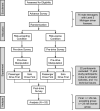Peer Passenger Norms and Pressure: Experimental Effects on Simulated Driving Among Teenage Males
- PMID: 27818610
- PMCID: PMC5094360
- DOI: 10.1016/j.trf.2016.06.007
Peer Passenger Norms and Pressure: Experimental Effects on Simulated Driving Among Teenage Males
Abstract
Objective: Serious crashes are more likely when teenage drivers have teenage passengers. One likely source of this increased risk is social influences on driving performance. This driving simulator study experimentally tested the effects of peer influence (i.e., risk-accepting compared to risk-averse peer norms reinforced by pressure) on the driving risk behavior (i.e., risky driving behavior and inattention to hazards) of male teenagers. It was hypothesized that peer presence would result in greater driving risk behavior (i.e., increased driving risk and reduced latent hazard anticipation), and that the effect would be greater when the peer was risk-accepting.
Methods: Fifty-three 16- and 17-year-old male participants holding a provisional U.S., State of Michigan driver license were randomized to either a risk-accepting or risk-averse condition. Each participant operated a driving simulator while alone and separately with a confederate peer passenger. The simulator world included scenarios designed to elicit variation in driving risk behavior with a teen passenger present in the vehicle.
Results: Significant interactions of passenger presence (passenger present vs. alone) by risk condition (risk-accepting vs. risk-averse) were observed for variables measuring: failure to stop at yellow light intersections (Incident Rate Ratio (IRR)=2.16; 95% Confidence Interval [95CI]=1.06, 4.43); higher probability of overtaking (IRR=10.17; 95CI=1.43, 73.35); shorter left turn latency (IRR=0.43; 95CI=0.31,0.60); and, failure to stop at an intersection with an occluded stop sign (IRR=7.90; 95CI=2.06,30.35). In all cases, greater risky driving by participants was more likely with a risk-accepting passenger versus a risk-averse passenger present and a risk-accepting passenger present versus driving alone.
Conclusions: Exposure of male teenagers to a risk-accepting confederate peer passenger who applied peer influence increased simulated risky driving behavior compared with exposure to a risk-averse confederate peer passenger or driving alone. These results are consistent with the contention that variability in teenage risky driving is in part explained by social influences.
Keywords: Hazard Perception; Injunctive Norms; Risky Driving Behavior; Simulated Driving; Social Influences; Teen Driver.
Figures
References
-
- Albert D, Steinberg L. Inhibitory Control and Drug Abuse Prevention. Springer; New York: 2011. Peer Influences on Adolescent Risk Behavior. pp. 211–226. http://doi.org/10.1007/978-1-4419-1268-8_11. - DOI
-
- Arnett J. Reckless behavior in adolescence: A developmental perspective. Developmental Review. 1992;12(4):339–373. http://doi.org/10.1016/0273-2297(92)90013-R. - DOI
-
- Beck LF, Shults RA. Seat belt use in states and territories with primary and secondary laws -- United States, 2006. Journal of Safety Research. 2009;40(6):469–472. http://doi.org/10.1016/j.jsr.2009.09.004. - DOI - PubMed
-
- Bingham CR, Ehsani JP. The relative odds of involvement in seven crash configurations by driver age and sex. Journal of Adolescent Health. 2012;51(5):484–490. http://doi.org/10.1016/j.jadohealth.2012.02.012. - DOI - PubMed
-
- Bingham CR, Shope JT. Adolescent predictors of traffic crash patterns from licensure into early young adulthood. Annual Proceedings / Association for the Advancement of Automotive Medicine. 2005;49:245–259. Retrieved from http://eutils.ncbi.nlm.nih.gov/entrez/eutils/elink.fcgi?dbfrom=pubmed&id.... - PubMed
Grants and funding
LinkOut - more resources
Full Text Sources
Other Literature Sources


